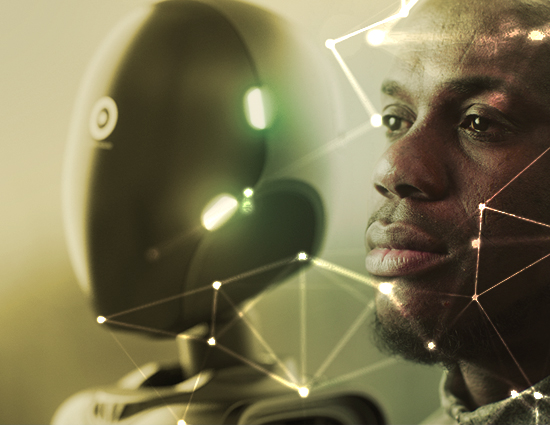It’s happening all around us. In both our working and private lives, the boundaries between the virtual and physical worlds are blurring into cyberspace. Every hour of every day, the metaverse is taking another insistent step towards reality. Many in the c-suite may shrug, dismissing it as just another passing fad. But for me that’s a huge mistake… the metaverse promises to impact every aspect of the global economy.
In this article I plan to explain the revolutionary vision behind the notion of the metaverse, explore challenges that still stand in its way, and point out some of the lessons we can learn in terms of protecting our security and privacy. But I want to infuse all that with a generous helping of advice for business leaders. Now is the time to sit up and take notice of the metaverse and start to think about what your place in it might look like. Or, at least, think about what the downsides might be if you’re not present.
A recent article in Tech.co coined a brilliant phrase – ‘the regretaverse’ – when setting out what metaverse-hesitant businesses need to do to make sure they’re not left behind. Chief among the advice was to look at what the biggest brands in their industry are currently doing. That’s good guidance, but I’d add to it the importance of looking inwards towards the core of your own organization.
The transition towards the metaverse is currently in an experimental period, so it’s an appropriate time to encourage greater awareness and understanding among your teams. Education is key, so perhaps consider hiring in new skillsets to disseminate knowledge across your organization and spur nascent strategic ideas. My colleague Christian Kroll, managing director of Capgemini Invent UK, described such an approach as enabling an incubator mentality. Certainly, it’s a good time to act. The current cost of engagement is relatively low, with the accessibility of incremental hardware such as VR headsets opening the way to rapid and effective experimentation.
The metaverse is a true paradigm shift
But before we get too far ahead of ourselves, let’s reflect on where we stand right now. Even the precise definition of the metaverse is still being debated because the term doesn’t really refer to any one specific type of technology. Rather it encompasses a broad (and often speculative) paradigm shift in how we interact with technology and use it to interact with others.
I’d point to three main reasons why the ultimate vision of the metaverse will be so revolutionary to our experience: we will have persistence in worlds that are seamless and worlds that are immersive. By persistence I mean the quality of a world that is always there and progressing – with or without your presence – and therefore mimics the real-world sense of time. Full persistence doesn’t yet exist, but there are pseudo-persistence techniques used (for example, the world being available when a games player wants to access it) which simulates true persistence.
Seamlessness applies to different digital worlds and how they bridge across to the physical world. This is closely tied with interoperability – or the ability to unify economies, avatars and systems across platforms. As worlds and concepts within domains start to merge, users will want to experience movement between platforms and between the real and digital worlds in a seamless and synchronous manner.
My third point is around being immersive. The metaverse is closely associated with three dimensional environments, but what that really represents is the concept of immersion. This can be defined as a deep engagement with the activity or the world(s) that will make up the metaverse. Deep engagement is not new – it is possible, after all, when reading a book – but what we will see is an amplification of it as new technologies seek to progress from engaging our minds to also engaging our physical senses.
Where Web2 meets Web3
The metaverse is often associated with a set of technologies that come under the umbrella term Web3 (decentralized mechanisms that allow for user control over assets). But Web2 technologies are more than capable of creating metaverse experiences. Many of the platforms that could be considered proto-metaverse, such as massive multiplayer online games, operate on Web2.
As we transition, the metaverse will be enabled by hybrid combination of both. It’s important to remember thought that Web3 technologies hold the promise of fully realizing the potential of the metaverse, where Web2 technology is likely to constrain it. The upshot is that Web3 will be a key part of metaverse developments. If you’d like to dive into more detail on that subject you can read more from CC’s Director of Service Innovation Martin Cookson as he both explains Web3 and outlines its benefits.
Now for the multi-trillion dollar question – will the multiverse actually land? The answer’s yes. Here at CC, we believe that the potential of virtuality and cyberspace has already been demonstrated through the gaming world and the creation of digital twins in industry. Seoul and Shanghai have both announced ambitions to build metaverse cities and have pledged billions of dollars to do so. And if cyberspace already augments the way we communicate, absorb knowledge and connect with new experiences, then the metaverse will amplify it exponentially. The revolution will expand not just our minds but also our physical senses through a spectrum of reality – from augmented to mixed, to virtual and everything in between.
Questions on the physical-digital bridge
We are currently operating within an in-between space, the physical-digital bridge. It is here that many of the key questions should be addressed. For example, to what extent can we or should we tie a virtual object to reality? What technologies or infrastructure do we need to replicate the effects of time and space in a digital world? How do we prove equivalence? What kind of learning transfers across from a human engaging in the virtual world to a human in the physical world?
The successful resolution of such questions will have the effect of magnifying our reach, connections, experiences, minds and knowledge. It will disrupt the way we earn money, the careers that we can follow and the way we socialize and work. Naturally, such far-reaching effects will need the appropriate safeguards. Many will say that applying them is a pipe dream since so many parts of the vision are still too immature. Because the Web3 technologies that underpin it are full of scams and fads. Or because it will pose sustainability issues due to the need to run energy-intensive blockchain mechanisms or train artificial intelligence models.
Actually, we can take lessons on how we protect ourselves and others from what has already been achieved in current cyberspace. They can inform proactive solutions that will ensure that everybody can access the metaverse safely and with their needs in mind. Many of the security and privacy techniques from Web2 can be ported across. Technically this would include the use of secure-by-design mechanisms, secure development practices and the use of well-established cryptographic libraries.
Digital transformation for physical product companies.
We could and should raise awareness and skills amongst consumers, users, developers and those running the infrastructure. To prevent or sanction criminal activity, regulations could be adapted from the cybersecurity legislation and standards we have now. The same holds true for concerns not just around security and fraud, but also around the sustainability issue – for example by drawing from the net zero drive, which would ensure that we can build and maintain these virtual worlds sustainably.
In summary then, we can define the metaverse as a collection of immersive, persistent, and interconnected virtual environments where social, economic and industrial elements are linked together with reality and are subject to transformations. Users and things can interact with it and each other simultaneously across devices and immersive technologies while engaging with digital assets and property.
Cyberspace has evolved into what many recognise as the fifth domain after land, sea, air and space. With the continued rise in technologies as well as a drive for virtual interaction that is set only to grow, will the metaverse be the next domain? I’d love to carry on the conversation, so please email if you’d like to discuss this fascinating and significant topic.





